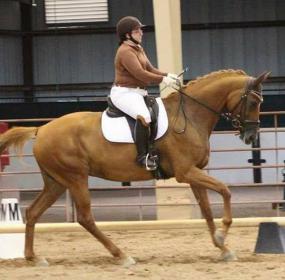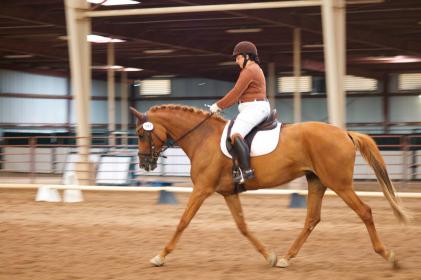It means I’m not the rider I want to be yet!
But really, it’s riding the hind legs under and developing power from behind, rather than pulling my horse to me. When I do it right, my horse is round and through and soft in the bridle. When I don’t, she’s not… In her case, it’s VERY visible, too.
This canter photo I am riding her from behind, and you can see the uphill and power. The trot photo, you can see the break in her neck, and that her withers are lower than her haunches. It’s because I have my reins too short and am pulling instead of giving forward. Notice my shoulders are also up near my ears in the trot photo - I brace in my shoulders which causes the pull. We still have energy in the trot photo, but there’s a reason the canter was getting 8s and the trot was getting 6es. My fault. Her back is more dropped in the trot photo behind the saddle, too. It all adds up to me not riding right.
BTW - these photos were from our highest scoring test ever, the judge underlined LOVELY canter, and after we finished my trainer took me out to the warmup and made me trot while giving forward with my hands to feel the difference in her trot, and told me it would be the difference between scores in the 60s and scores in the 70s. He was, of course, exactly right.
[ATTACH=JSON]{“data-align”:“none”,“data-size”:“medium”,“data-attachmentid”:9867626}[/ATTACH]
[ATTACH=JSON]{“data-align”:“none”,“data-size”:“full”,“title”:“Canter_fromMissy.jpg”,“data-attachmentid”:9867625}[/ATTACH]








